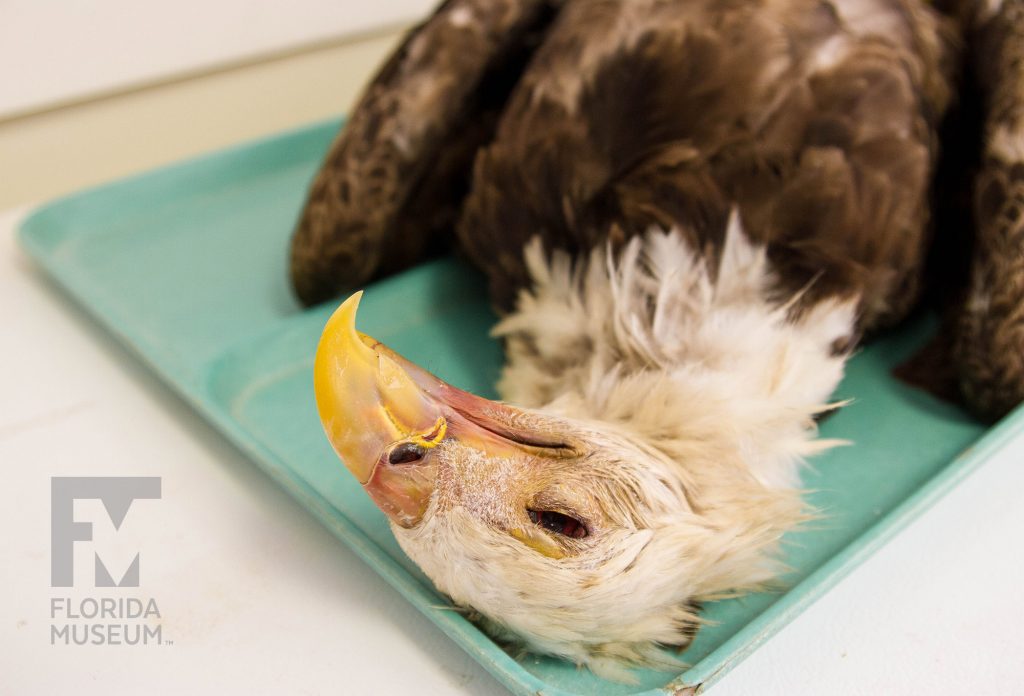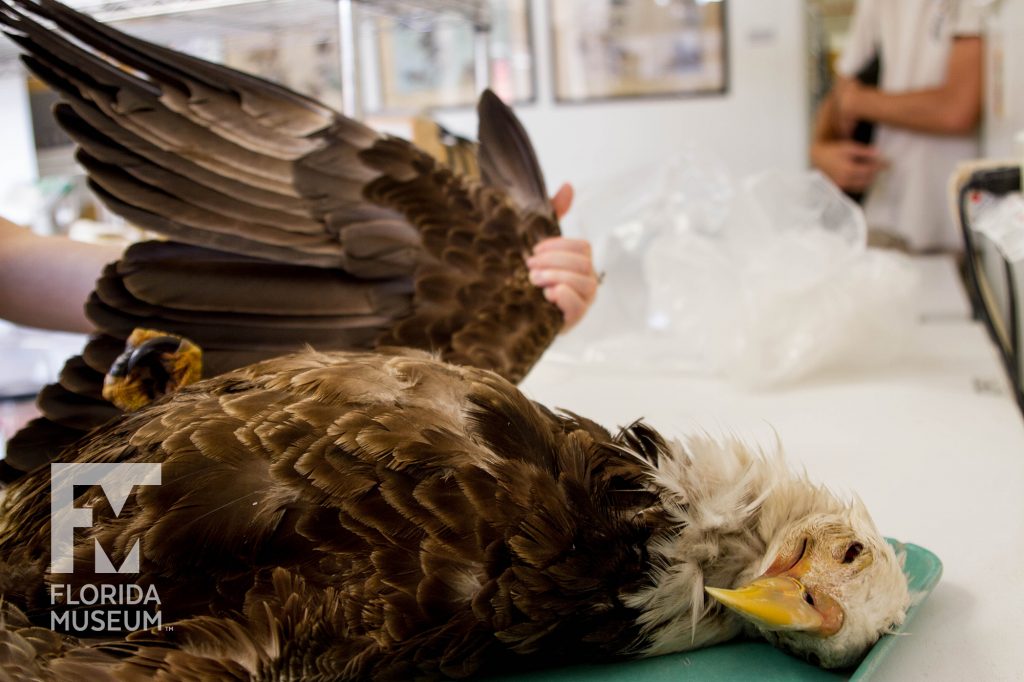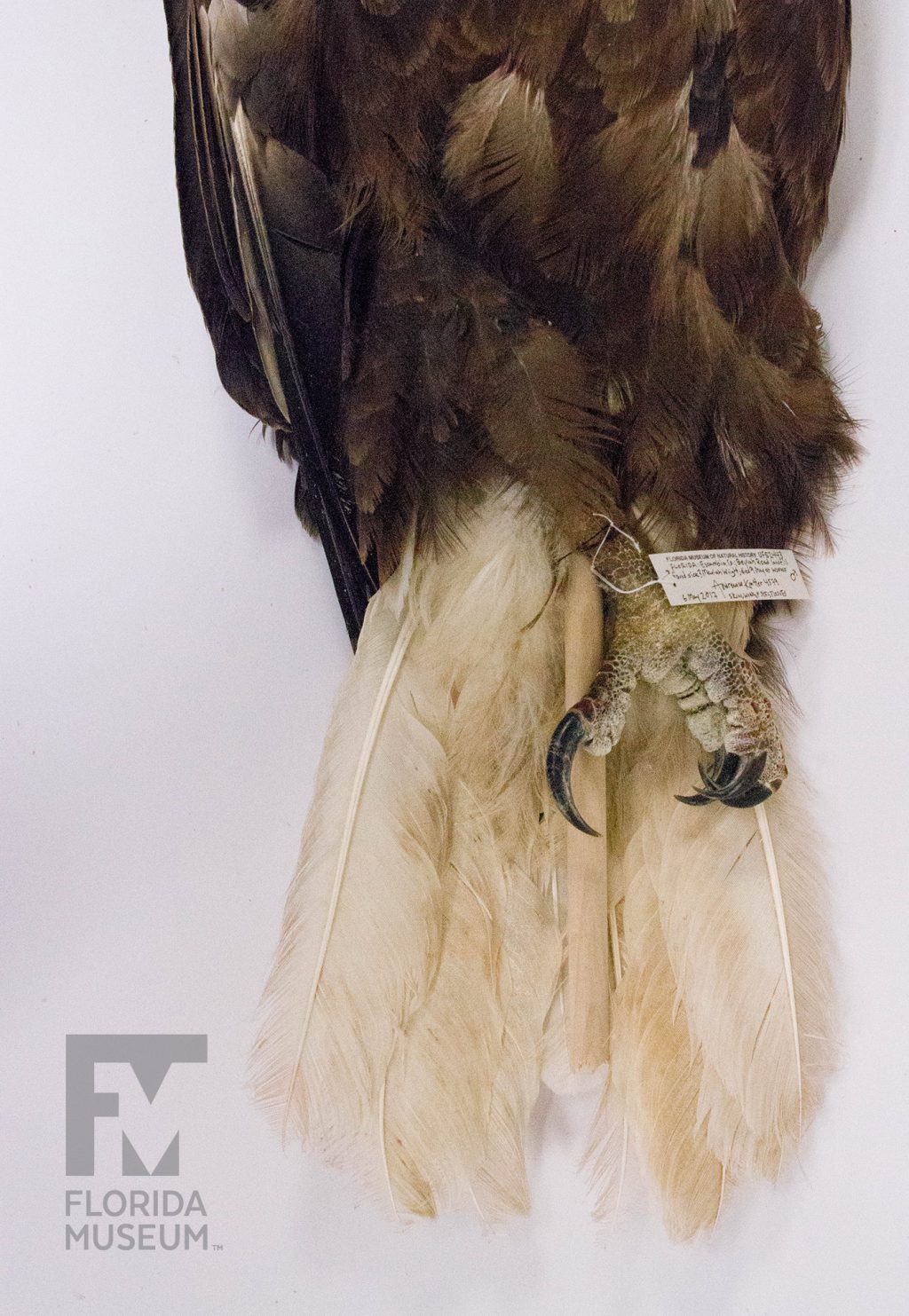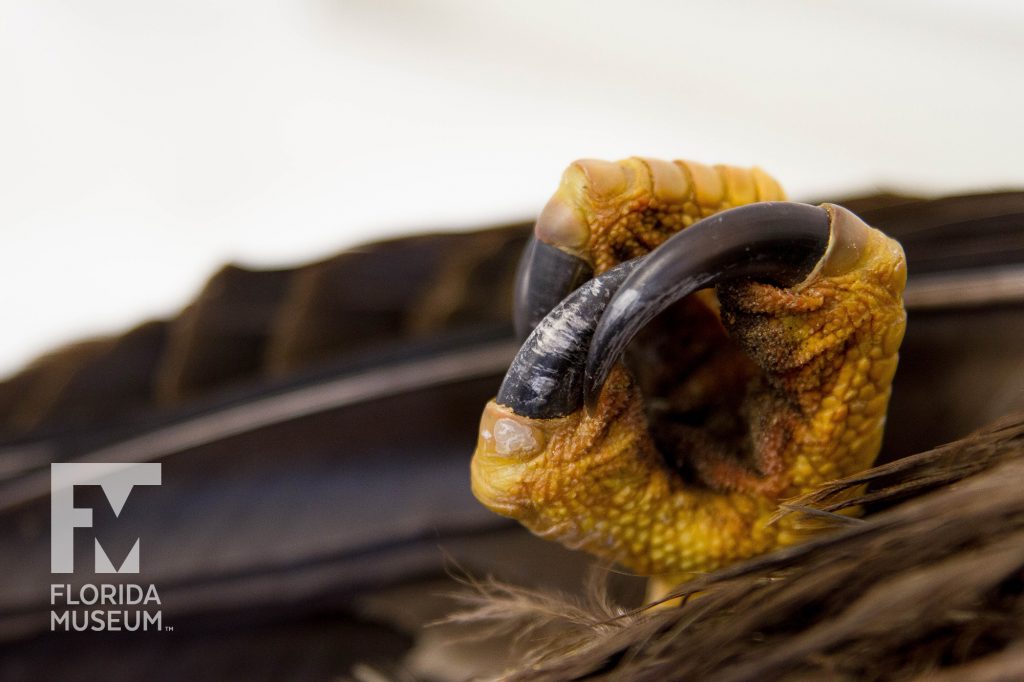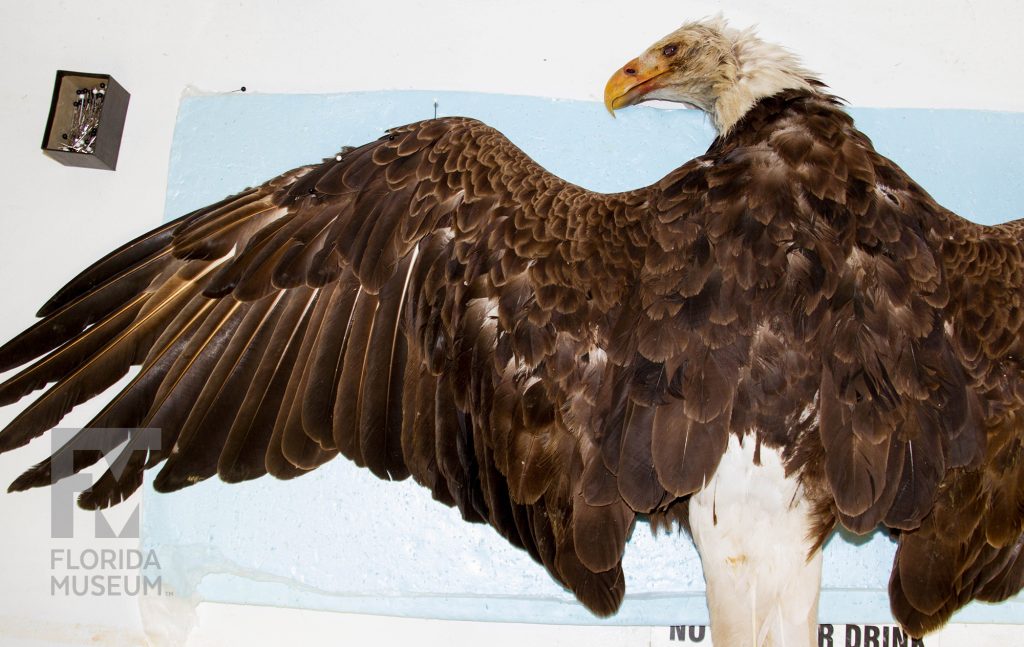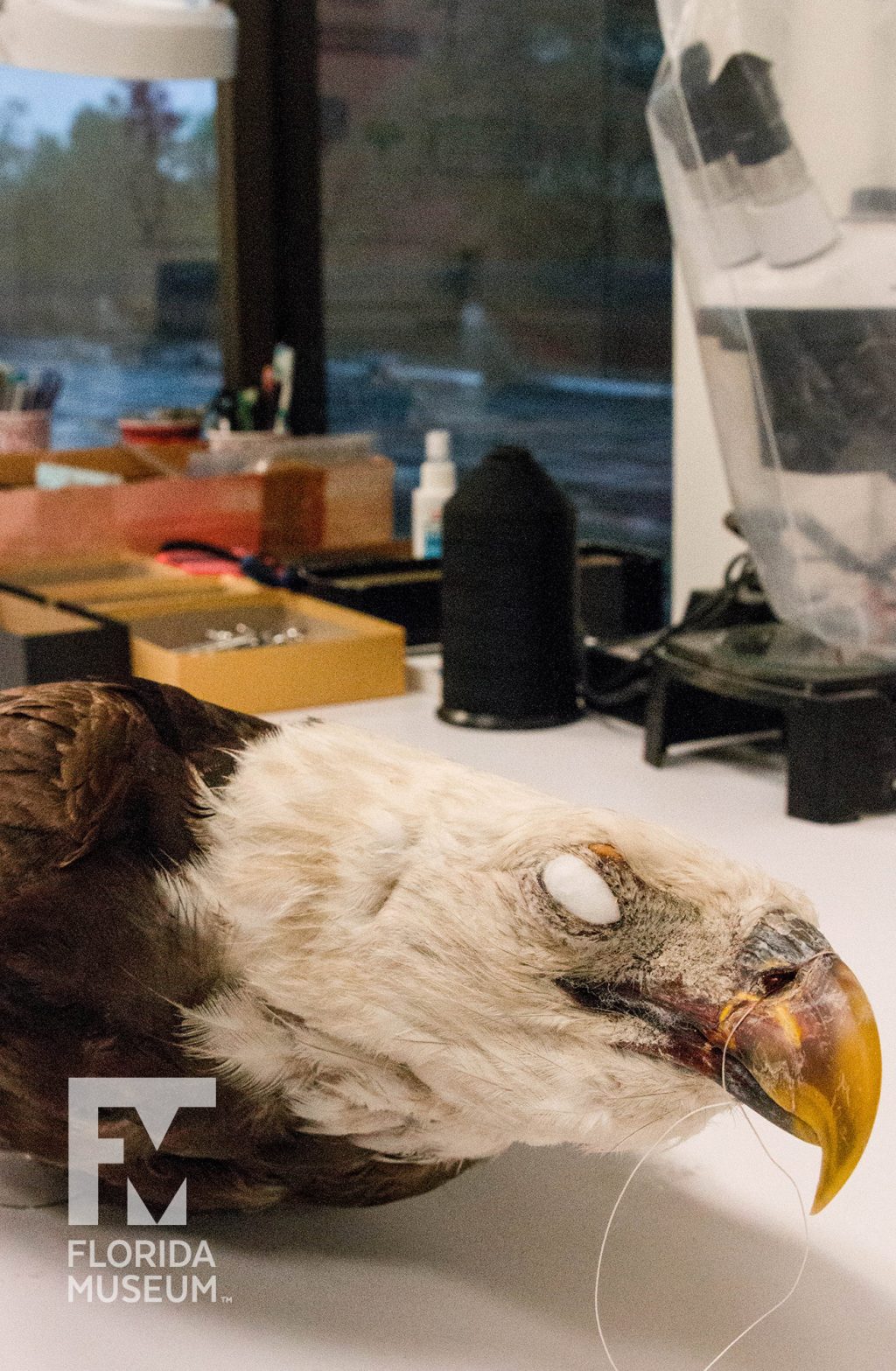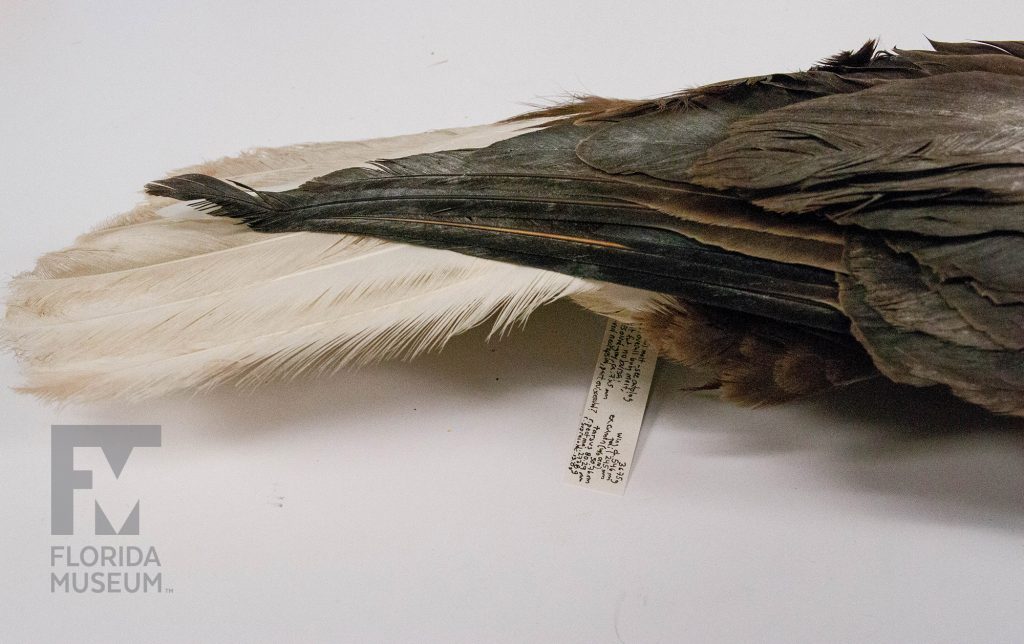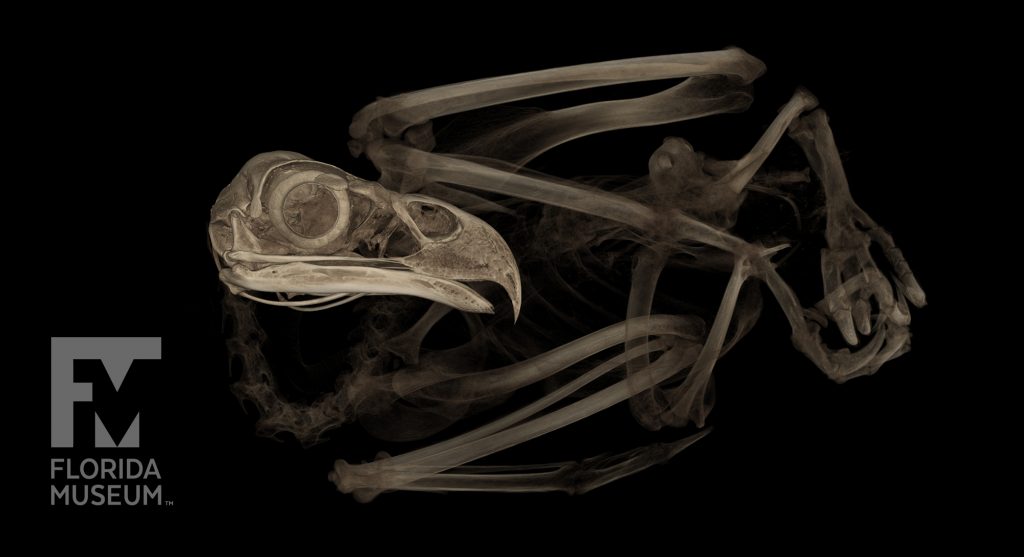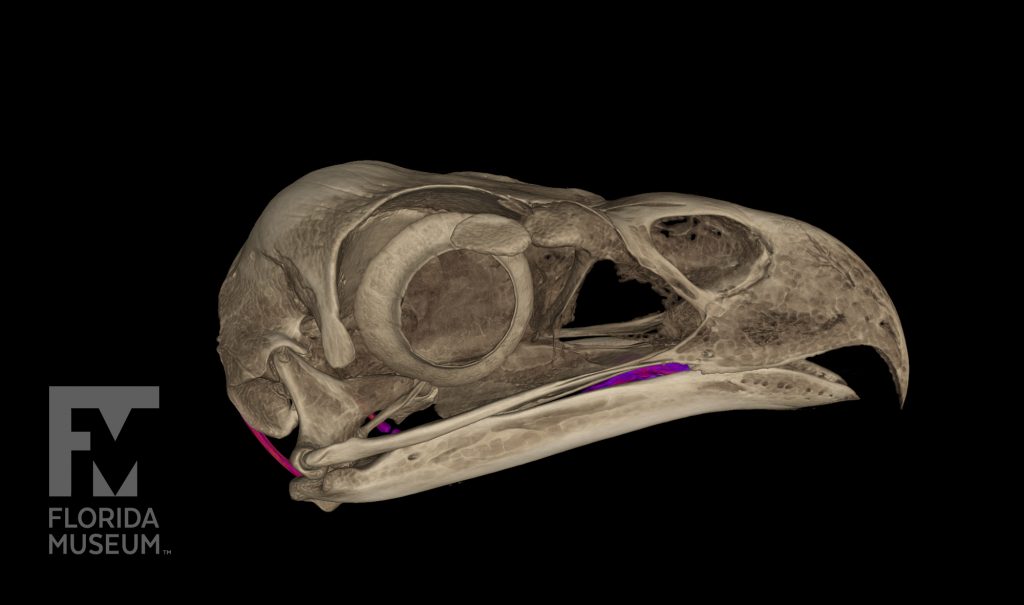Bald eagle
Scientific name: Haliaeetus leucocephalus
Specimen: UF-O-52443
Although bald eagles were on the brink of extinction due to habitat loss and impacts from DDT, their populations recovered sufficiently to be taken off the endangered species list in 1995. Bald eagles are now categorized as “Least Concern” on the International Union for Conservation of Nature’s Red List. Their native range covers most of North America, extending throughout much of Canada and Alaska and into northern Mexico.
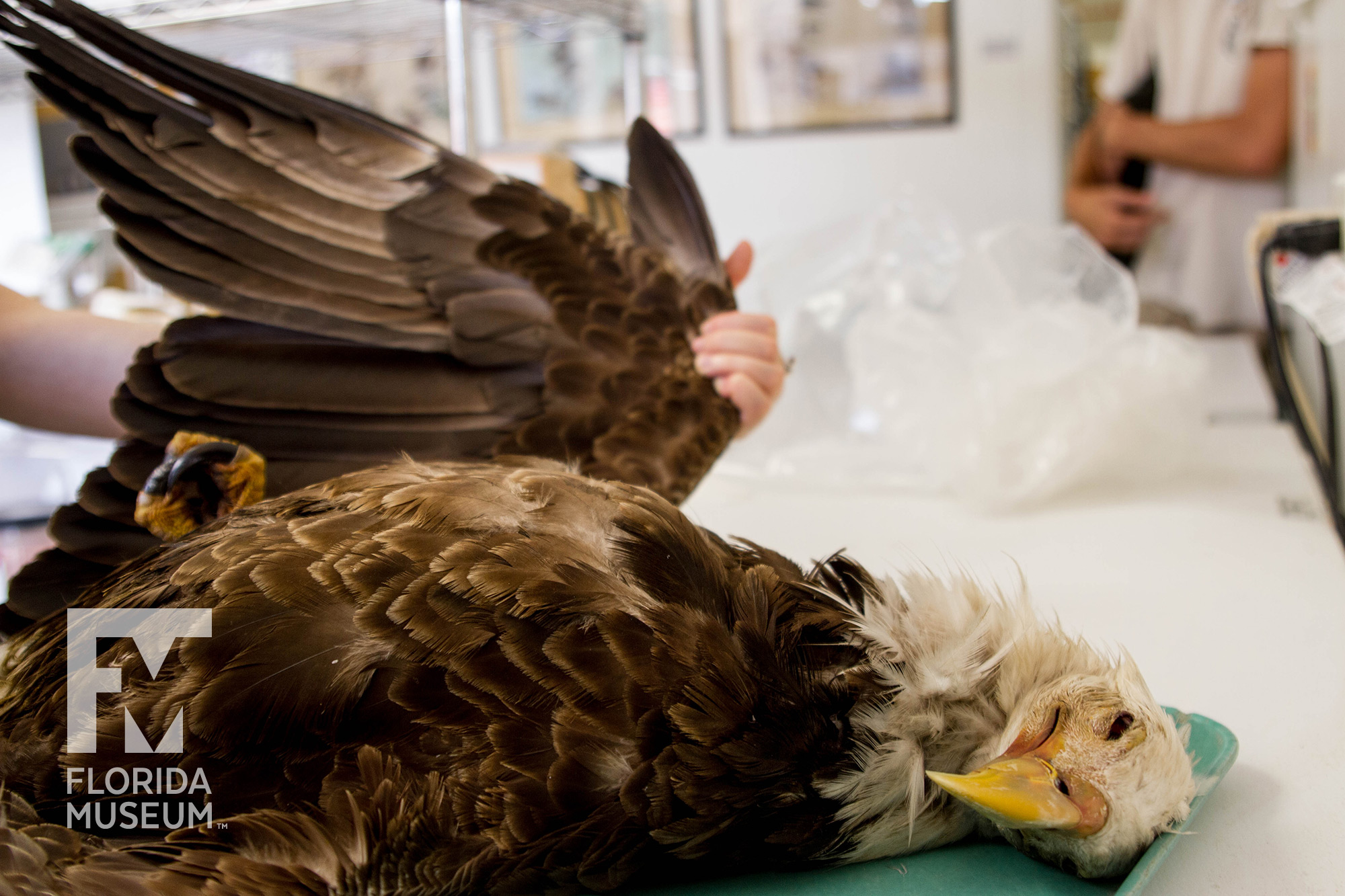
Florida Museum photo by Rose Roberts
Classically-recognized bald eagles have a white head, yellow beak and feet, dark brown body and wings and a white tail. But the head and tail feathers don’t turn completely white until the birds reach sexual maturity at four to five years old. Their wingspan is typically 5.5 to 7.5 feet, and they can weigh up to 14 pounds.
Bald eagles belong to the genus Haliaeetus, commonly known as sea eagles, and their main diet is fish, so they are often found near water or wetlands. But they are opportunistic carnivores that also eat other birds and mammals when they can or need to. When diving for fish, they can reach speeds of almost 100 mph.
U.S. law prohibits anyone from keeping bald eagles without a special permit. Current eagle feather laws prohibit ownership of eagle feathers or body parts except by recognized Native American tribes. The National Eagle Repository was set up by the U.S. Fish and Wildlife Service to collect, process and distribute feathers and parts to recognized tribes for ceremonial purposes.
On rare occasions, museums and other institutions are granted permits to receive eagles for research. The Florida Museum has received two eagles this year to be entered into our collections.
Processing the specimen
CT scanning the specimen
Learn more about the Ornithology Collection at the Florida Museum.
Read about the National Eagle Repository.
More at IUCN Red List: Bald eagle.
